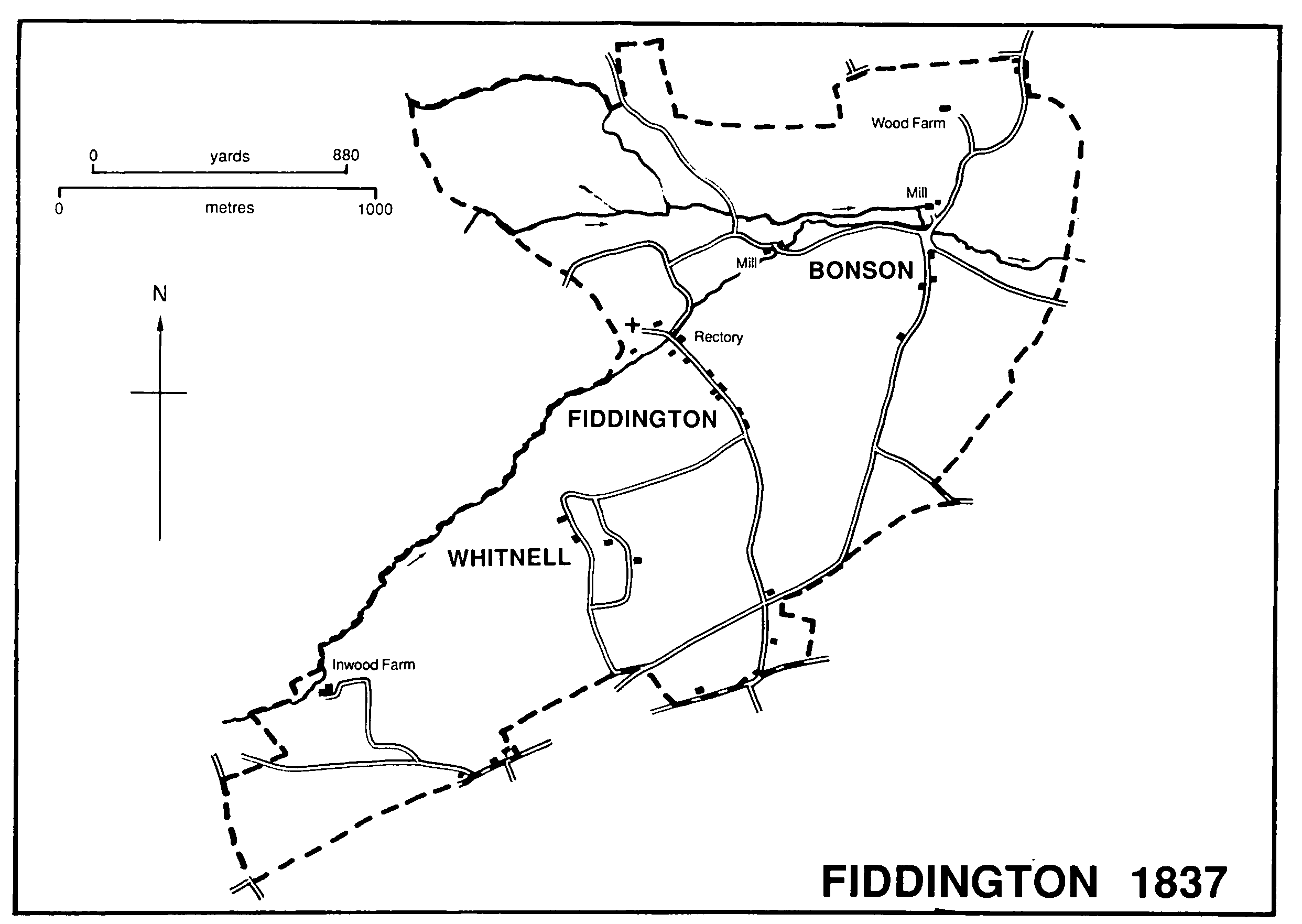A History of the County of Somerset: Volume 6, Andersfield, Cannington, and North Petherton Hundreds (Bridgwater and Neighbouring Parishes). Originally published by Victoria County History, London, 1992.
This free content was digitised by double rekeying. All rights reserved.
A P Baggs, M C Siraut, 'Fiddington', in A History of the County of Somerset: Volume 6, Andersfield, Cannington, and North Petherton Hundreds (Bridgwater and Neighbouring Parishes), ed. R W Dunning, C R Elrington (London, 1992), British History Online https://prod.british-history.ac.uk/vch/som/vol6/pp98-99 [accessed 23 April 2025].
A P Baggs, M C Siraut, 'Fiddington', in A History of the County of Somerset: Volume 6, Andersfield, Cannington, and North Petherton Hundreds (Bridgwater and Neighbouring Parishes). Edited by R W Dunning, C R Elrington (London, 1992), British History Online, accessed April 23, 2025, https://prod.british-history.ac.uk/vch/som/vol6/pp98-99.
A P Baggs, M C Siraut. "Fiddington". A History of the County of Somerset: Volume 6, Andersfield, Cannington, and North Petherton Hundreds (Bridgwater and Neighbouring Parishes). Ed. R W Dunning, C R Elrington (London, 1992), British History Online. Web. 23 April 2025. https://prod.british-history.ac.uk/vch/som/vol6/pp98-99.
FIDDINGTON

Fiddington 1837
The ancient parish of Fiddington, including the hamlets of Whitnell and Bonson, formerly Bonstone, (fn. 1) lay between Cannington on the east and Nether Stowey on the west, 9 km. north-west of Bridgwater. Parts of Spaxton lay to the north and south. (fn. 2) The parish, irregular in shape, occupied a shallow valley falling northwards from 76 m. to 15m., drained by a stream which formed part of its western boundary before curving east through Fiddington village and north of Bonson. The southern boundary seems to have been influenced by two ancient routes from the east, the Anglo-Saxon 'herpath' from Cannington Hill to the Quantocks and another roadway from Combwich and the Parrett crossing, which not only converged within the parish but were joined for part of their common route by the road between Bridgwater and Nether Stowey. The last route had become important by the 18th century and was turnpiked in 1759. (fn. 3)
The ancient parish was said to measure 874 a. (fn. 4) In 1878 some land at Coultings, in the northeast, was added from Cannington, and a larger area in the north, known as North Street and including the Farm estate and Bonson Wood, was transferred from Spaxton. The acreage of Fiddington civil parish thus increased to 1,314 a. (fn. 5)
Most of the parish lies either on valley gravels or Keuper marl, with an outcrop of sandstone around Whitnell. There may have been a quarry in the east, and pits in several places suggest marl digging. (fn. 6) Two principal roads lead northwards through the parish from the same point on the southern boundary, one passing through Fiddington village towards Stogursey, the other through Bonson to Coultings and thence to Combwich. Fiddington was in existence by the later 11th century, Bonson by the later 12th. (fn. 7) Whitnell, south-west of Fiddington village, was recorded in 1327. (fn. 8) Inwood Farm, first mentioned in 1558, (fn. 9) lies further south-west; Wood Farm, referred to by 1652, (fn. 10) is in the extreme north-east. Keenthorne House, Heathfield Villa, and the Cottage inn are outlying houses on the Nether Stowey to Bridgwater road. All three main hamlets, Fiddington, Whitnell, and Bonson, have modern infill development; at Fiddington, arranged along a single street, bungalows and houses replaced almost all the older cottages in the 20th century although one house survives from the 17th century and another, probably used by the clergy when the rectory house was unfit, may be earlier. There is a large caravan and camping site at Mill Farm. One house at Whitnell may date from the late 16th century. (fn. 11)
No references have been found either to openfield arable or to common pasture. There were 42 a. of woodland in 1086, (fn. 12) and the farm names Wood and Inwood and the field names Copse and Wood close in the north-east indicate its former significance. There was no woodland in 1837. (fn. 13)
There was a licensed tippler in Fiddington in 1607 and a single licence was granted during the 17th and 18th centuries except between 1740 and 1753 when there were two. The last licence was issued in 1753 and there was no public house in the parish thereafter until the mid 19th century. (fn. 14) The Cottage inn, also known as the Keenthorne inn, was first recorded in 1861 when there was also a retailer of small beer, possibly at Bonson. (fn. 15) The Cottage inn remained open in 1988.
Ten Fiddington men were fined following the 1497 rebellion. (fn. 16) The Fiddington revel was recorded in 1675. (fn. 17) A number of people were presented for playing fives against the church walls on Sunday in 1623. (fn. 18)
The population rose from 147 in 1801 to a peak of 260 in 1851. Thereafter there was a general decline to 156 in 1901 despite the increase in the size of the parish. During the later 20th century, however, the population increased considerably to 243 normally resident in 1981. (fn. 19)